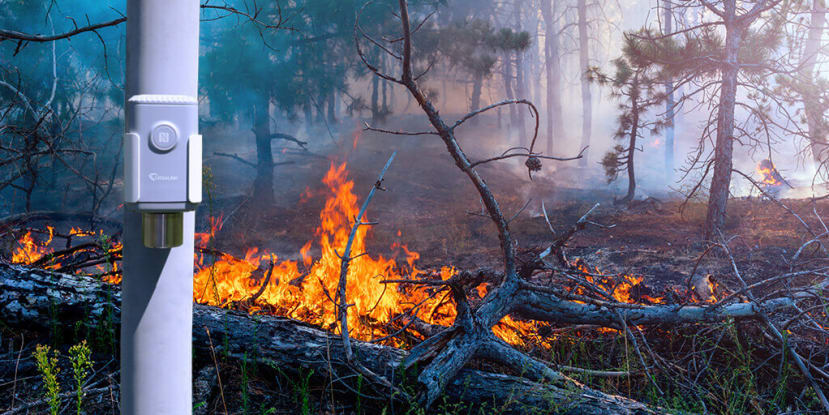A CLIMATE PROJECT: (IoT) - Internet of Trees - Monitoring and Protecting Our Crucial Natural Resources
Follow projectHow do you feel about this article? Help us to provide better content for you.
Thank you! Your feedback has been received.
There was a problem submitting your feedback, please try again later.
What do you think of this article?
 As part of my third-year dissertation, I'm currently working on the curation of a sensor system to detect the early warning signs of wildfires & monitor reforestation tree health. Our aim is to launch a spin-out company to productise the technology.
As part of my third-year dissertation, I'm currently working on the curation of a sensor system to detect the early warning signs of wildfires & monitor reforestation tree health. Our aim is to launch a spin-out company to productise the technology.
Project Overview
We are in the middle of a climate emergency. As previous generations have created this situation and left us to deal with the consequences, we need to be finding and developing as many new technologies as possible that initiate the removal of carbon from our atmosphere at scale.
Trees are an obvious and natural way to remove carbon from our atmosphere. But globally, we’re chopping down natural forests at an unprecedented scale due to our overexploitation of natural resources and building ever-larger cities without properly and efficiently using land within existing cities. The diminishing number of trees on the planet together with the loss of fertile, productive soil, is a problem exacerbating climate change by worsening the greenhouse effect and leading to global warming. One solution (somewhat obviously) is reforestation, the re-planting of trees. Rather than just replanting the trees we use, we need to planting a net positive amount of trees to begin making a significant inroads into the removal of carbon from our atmosphere.
Somewhat paradoxically, the effects of global warming pose a significant risk to reforestation efforts, with wildfires and changes to climates putting plantations of trees at risk of failure or destruction. In addition, because of the time it takes for a tree to grow, we won’t know the full impact of reforestation efforts for many years, so we cannot afford for plantations to fail.
This project will look at creating technology that can be deployed within existing forests and new plantations to monitor the health of the trees and seedlings, capture information about the climate and weather conditions as well as provide early warnings of risks such as wildfires and criminal damage.
Experimentation
During the course of the academic year, on my way to producing the technology, I hope to consult experts in the field to understand the use cases for my sensor. I will begin by testing the individual components and hence proceeding to trial which sensor provides the most accurate indication of tree health. Thus, the sensors providing the most accurate information will be integrated to form the overall sensor system. Many factors are indicative of tree health such as:
- Temperature
- Humidity
- Low soil moisture
- Low water/moisture content (within the tree)
- Wind speed
- Movement
*Other environmental factors can also be used to provide supplementary information about the surrounding tree's health. For example, lower moisture content in the chamise plant equates to a sooner start to the wildfire season. In addition, infrared light indicating the movement of people equated to an increased risk of a wildfire.
Thus, I will need to use the following sensors to provide me with the respective information:
- Thermocouple
- Hygrometer
- Tensiometer
- Anemometer
- PIR sensor
